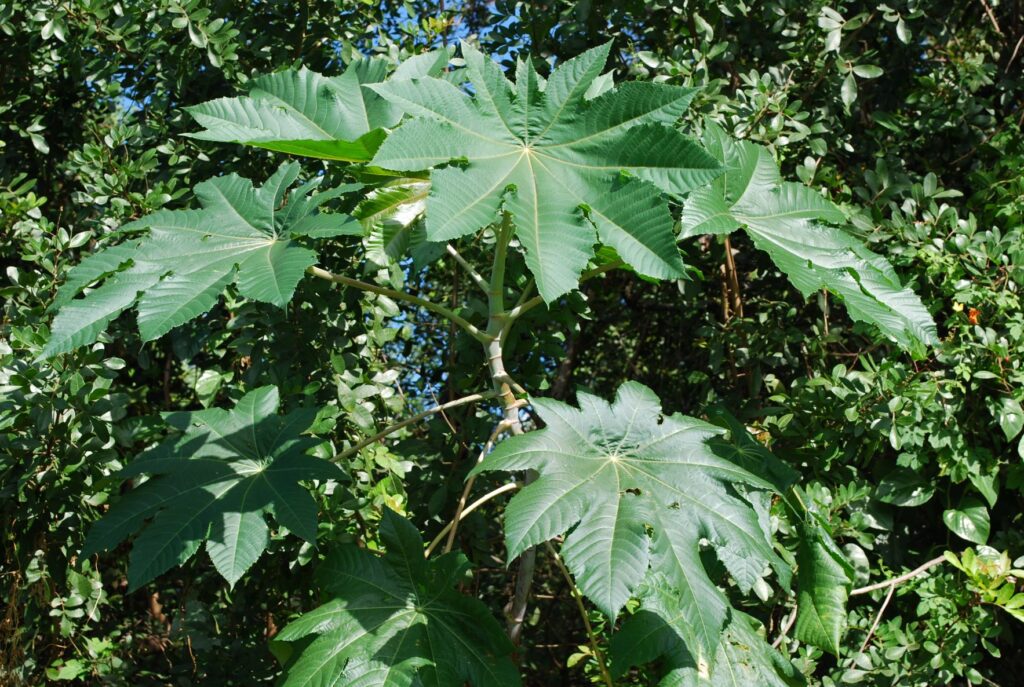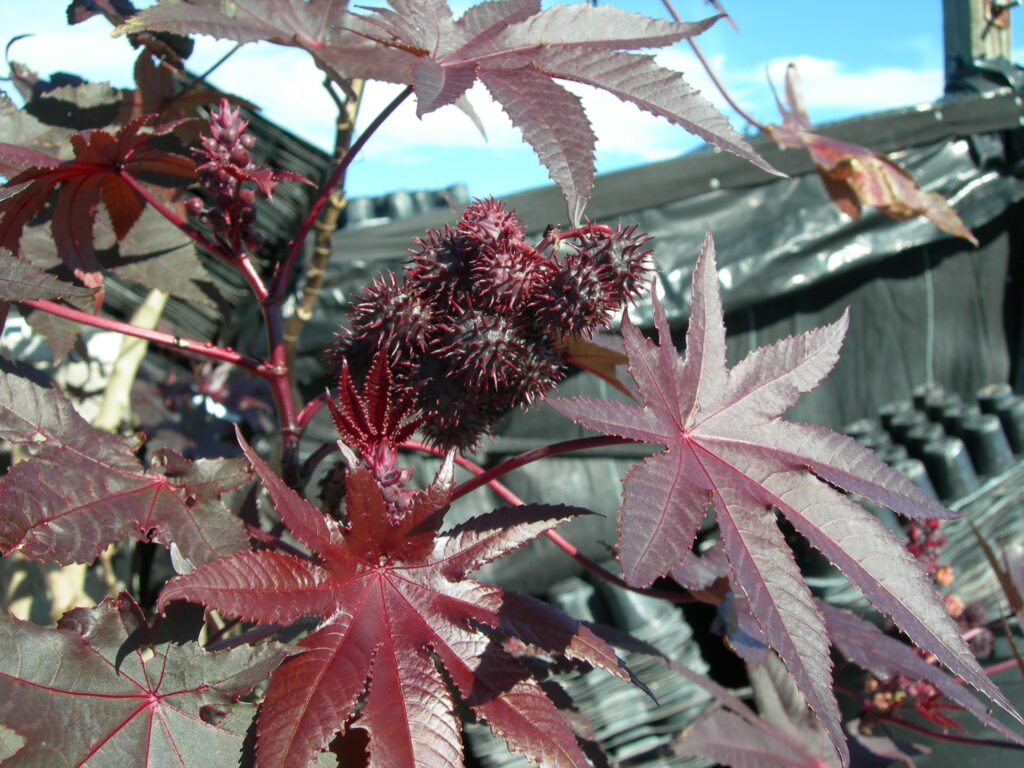For many folks, Halloween is a time to celebrate all the ancient festivals that came before and still exist. Halloween combines the Celtic feast of Samhain, Roman harvest festivals, and the Christian All Saint’s Day. Plant traditions are standard parts of the celebrations. What about scary plants like Castor Bean for Halloween?

The Roman harvest celebration partially honored the goddess Pomona or fruits and trees. The tradition of bobbing for apples was said to be part of Samhain and Halloween from the feast for Pomona. However, there is little historical evidence to support this. However, in the British Isles, bobbing for apples was used as a divination game that would reveal the first letter of your true love’s name.
According to Irish legend, Stingy Jack tricked the Devil into promising he wouldn’t go to hell for his sins. When he died, he discovered neither heaven nor hell would admit him. He was turned away with nothing more than a burning ember from hell to light his way. Jack hollowed out a turnip to hold the ember, and “Jack of the Lanterns” has been wandering the countryside with his glowing turnip ever since.
Pumpkins are New World plants. The inhabitant of the British Isles carved faces into turnips, rutabagas, potatoes, or even beets and lit them on All Hallows’ Eve to frighten away Stingy Jack. When Irish immigrants came to America, they found few turnips or rutabagas. They used what was available, eventually turning to the larger and much easier carving pumpkin for jack-‘o-lanterns.
There are plants just as scary as those we use as decorations at Halloween. The big-leafed castor bean (Ricinus communis) is a plant worthy of respect and can give parents and farmers a scare indeed. Castor bean is native to the Middle East and Africa but has become widespread throughout subtropical and tropical regions worldwide. It showed up in Florida between 1884 and 1913.
Castor bean is in the plant family Euphorbiaceae, the same as poinsettia and crown-of-thorns. It is a perennial and can reach 40 feet tall. The leaves are roughly circular with deep lobes, large, and the petiole attaches in the middle. It flowers in the summer and fall on spikes at the ends of the stems. The fruit follows the flowers and is a red capsule with many spikes. The three shiny, mottled seeds inside the capsules can be troublesome.

These scary plants grow in disturbed areas throughout the state. It is an aggressive grower and considered invasive – scary! Castor bean pollen is highly allergenic, and the sap causes dermatitis in some people. If the seeds are ingested by pets, fatality is possible – scary. Ricin, a highly toxic substance, is made from castor beans.
However, castor beans are also beneficial. Castor oil has been used medicinally, notably as a laxative. Commercially, oil is extracted and used in plastics, paint, lubricants, soap, ink, and paint.
Cast bean plant is both scary and useful. If you find it in your garden or landscape, remove it as invasive. For an interesting read, check out Dr. George Rogers’s Treasure Coast Natives BLOG about castor bean history and Jeckle and Hyde personalities.
This column first appeared in the Treasure Coast Newspapers.
Leave a Reply